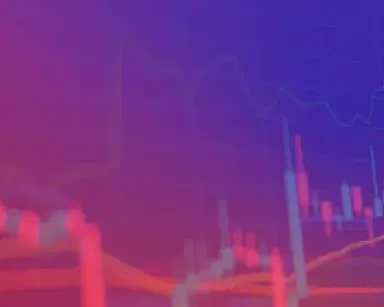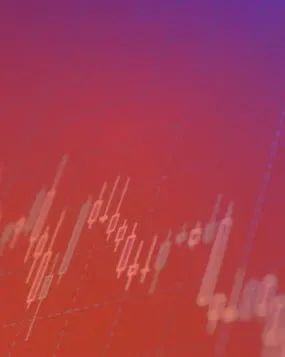
What is a SPAC and how does it work?
SPACs have become a more common way of going public – especially in the US – over the last couple of years. Discover everything you need to know about SPACs and how to trade them.
What does SPAC stand for?
SPAC stands for Special Purpose Acquisition Company.
What is a SPAC?
A Special Purpose Acquisition Company is a business that is created with the sole ambition of merging with another company to take it public. SPACs, also known as blank-check companies, have no commercial operations but use money raised from the public to fund a takeover or merger of another company.
They are usually set up by investors and sponsors that have a particular area of expertise and want to explore potential deals in the sector. SPACs do not usually reveal precise targets but often signal a specific industry and region that they are focusing on.
SPAC IPOs: how do they work?
A SPAC starts out as nothing more than a shell company with an idea. It doesn’t make or sell anything and has no assets. It is simply a group of people hoping to raise cash, buy an existing business and generate returns for everyone involved.
The first step is raising cash. A SPAC will go public and list on a stock exchange, raising money from investors and institutions. At this stage, the SPAC still doesn’t do anything, but it now has a pool of cash that can be used to fund potential acquisitions. In the meantime, the cash is placed in an account to generate interest.
With cash in the bank, step two is to acquire a company. Although some SPACs come to market with a target in mind, it is rare that investors know what the SPAC is going to buy with the cash they invest at the time of the IPO. This means those that invest in a SPAC IPO are doing so with limited vision.
Some SPACs will move relatively swiftly, especially if the SPAC is already lining up a deal in the background. Others take longer because they choose to explore a wider range of deals or because deals unexpectedly collapse, forcing it to find another target. SPACs ultimately have two years to complete an acquisition or they must be liquidated and return the funds they raised to investors. This partly explains why investors are willing to gamble on a SPAC IPO as the cash invested is safe if things don’t go to plan.
Once the acquisition is complete, the target company is absorbed by the publicly-listed SPAC. This means the target company has become a publicly-traded company and that the SPAC now has a fully functioning business. Those that invested in the SPAC before the acquisition now own shares in the target company, which can use the money raised by the SPAC to fund its growth ambitions.
One of the most important things to consider when a SPAC agrees to buy a business is who will be running everything after the deal is completed. Sometimes, the investors and sponsors may buy the business and decide to run it themselves or under new management, while others allow founders or management with experience running the actual business to stay on. A report from McKinsey & Co in September 2020 found those led by people with experience in the industry outperform SPACs run by those that only executives with finance and investment backgrounds.
Why do companies choose SPAC IPOs?
There are several reasons why companies are attracted by propositions to sell-up to SPACs rather than explore other ways of monetising their investment by selling to private equity or pursuing a traditional IPO.
You can read more about IPOs and how they work here.
It is a quicker way for a company to go public as the SPAC has already done the hard work, allowing it to bypass the traditional IPO process and save both time and money – as well as the regular scrutiny that occurs in the roadshow leading up to a listing. SPACs are seen as an ideal route to market for many companies, particularly loss-making tech companies.
Even if going public isn’t a priority, companies can still be enticed by SPACs simply because they can achieve a higher price compared to selling to another business or private equity as it opens up trading in its shares to the public to generate more competition.
SPAC IPO examples: what companies completed SPAC IPOs?
A number of well-known businesses have used SPACs as a way of going public and avoid the usual IPO process or a direct listing. This includes space firm Virgin Galactic and electric truck company Nikola, which we explore in more detail below.
You can read more about the top IPOs, as some of them may choose to merge with a SPAC rather than conduct a traditional listing.
Virgin Galactic SPAC IPO
Virgin Galactic went public in 2019 by merging with a SPAC called Social Capital Hedosophia, which had raised around $700 million when it joined the market in 2017. That allowed Virgin Galactic to secure the funds it needed to grow, boosted by a further $100 million from the SPAC’s chief executive, and provided a way for more investors to access its shares.
The company chose to go public using a SPAC rather than the traditional process because, as the first space tourism firm to go public, its valuation and prospects could have come under tougher scrutiny in the run-up to a traditional listing. It started out life as a publicly-traded business with an enterprise valuation of around $1.5 billion and has seen that rise significantly since.
‘One of the nice things about SPACs is that we know today as we officially float Virgin Galactic already has the money to see it right through to profitability and beyond,’ said Richard Branson on the first day of trading.
Nikola SPAC IPO
Nikola went public in 2020 by merging with SPAC VectoIQ Acquisition, which had raised $200 million through its IPO in 2018. The SPAC was created by former executives from General Motors, so that gave a good indication that they would pursue something in the automotive space.
The deal valued Nikola at an enterprise value of around $3.3 billion. It injected the $200 million plus interest from the SPAC’s IPO proceeds and also raised further funds from a private placing.
Nikola is another company that wanted to avoid the lengthy process of a traditional IPO and too much scrutiny over its loss-making business, although that has not stopped it being criticised since going public.
Why are SPACs surging in popularity?
SPACs have been around for decades but have only surged in popularity in recent years as they become a viable alternative route to market for companies seeking to go public.
In fact, 2020 was a record year for SPACs, with 248 of them listing in the US and raising over $83 billion. That was up from just 59 SPAC IPOs in 2019, 46 in 2018 and 34 in 2017, according to SPACInsider. It also appears that we are far from the peak considering over 150 SPACs have filed for an IPO in the first two months of 2021 alone.
There are several reasons why SPACs have become more popular. Firstly, more SPACs are managing to acquire a business. Figures from McKinsey suggest over 90% of SPACs have gone on to complete a merger after listing since 2015, whereas before that the figure was closer to 80% and more SPACs had to be liquidated.
Secondly, SPACs have grown in size over recent years from an average of just $200 million in 2016 to $400 million in 2020, and they are being established by more high profile investors and experienced executives, both of which help drum up interest from markets and improve the chances of deals being completed.
Will the UK, Europe and Asia embrace SPACs?
SPACs are particularly popular in the US right now, but they are not exclusive to the country. The regulatory regime varies country-to-country, so the rules for SPACs differ depending on where you’re talking about.
In the UK, for example, shares in a UK-listed SPAC have to be suspended when they announce a takeover deal and they only resume trading once it is completed or if it collapses. This suppresses appetite for both those wanting to buy into the SPAC before the deal completes and the early investors that want to cash-in on any profits that have occurred as a result of announcing the deal.
Hugh Osmond, the chairman of Broadstone Acquisition Corp, wrote for the FT in December and said this system ‘just doesn’t work for anyone’ and that this was ‘why London is losing out’ to other countries.
Xavier Rolet, the former chief executive of the London Stock Exchange, has said the UK needs to embrace SPACs to fend off competition from Europe post-Brexit, with Amsterdam emerging as the favourite destination for European SPACs thanks to more favourable rules.
There are also signs that SPACs are growing in popularity in Asia, where many countries do not currently allow companies to raise money for unspecified uses. Singapore is reported to be considering relaxing rules to allow SPACs to list, making it the first exchange to embrace the demand for them in the region.







